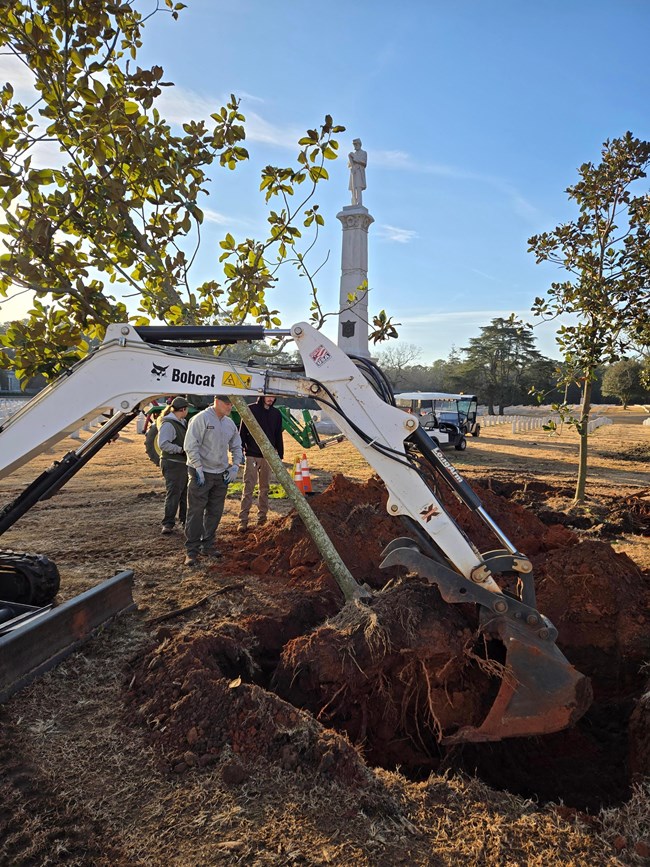Last updated: April 10, 2025
Article
Andersonville's Treasured Magnolias: A Story of Preservation and Renewal

These young trees are not just any Magnolias; they are clones of an overly mature Magnolia tree that once graced the northeastern quadrant of the National Cemetery. The story of this preservation effort started in 2019 when Bartlett Tree Experts conducted a risk assessment of the historic Magnolia trees at Andersonville. The assessment revealed that the mature Magnolia in the northeastern quadrant had a moderate risk rating due to decay in its main stem. In 2023, the original tree was mostly removed, but four clones that had sprouted from its root system were left in place.

The Magnolia clones remained in their original location until January 2025. New planting locations were cleared by archaeological staff and the clones were transplanted. This project serves a dual purpose:
- First, it addresses the pressing issue of limited grave space. By moving the clone trees, the park has opened approximately 95 new burial spaces, providing at least six months of additional operation.
- Second, the transplanting contributes to the cemetery’s historic character. The project aligns with the 2022 planting plan, strategically adding trees to desired locations. Furthermore, it’s a sustainable and cost-effective approach to maintaining the cemetery's beauty.
By propagating and transplanting trees, the park is essentially producing "new" trees in-house using existing equipment and saving resources. The newly transplanted trees were treated with specialized fertilizer to encourage root growth and water uptake. A board-certified master arborist on staff at the park is overseeing the trees to maximize their chances of survival.
This project highlights Andersonville National Historic Site's commitment to preserving its historical landscape while also addressing the practical needs of the National Cemetery. It demonstrates how thoughtful planning, and proactive measures can ensure that this hallowed ground remains a place of beauty, history, and remembrance for generations to come.
This project highlights Andersonville National Historic Site's commitment to preserving its historical landscape while also addressing the practical needs of the National Cemetery. It demonstrates how thoughtful planning, and proactive measures can ensure that this hallowed ground remains a place of beauty, history, and remembrance for generations to come.
